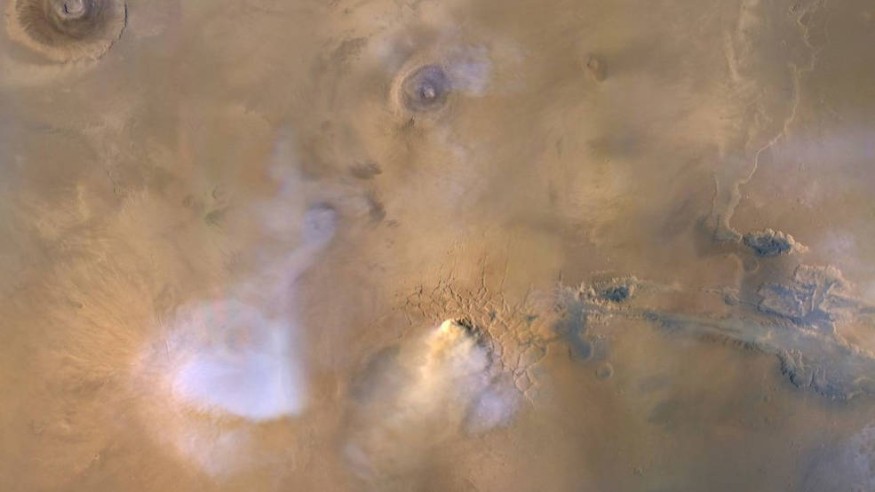
Dust storms are quite a common thing on Mars. It usually happens when the wind produced by the planet's thin atmosphere picks up the dust particles on its surface. Sometimes it can last for a number of Martian days and can have a speed of 33 to 66 miles per hour and can lead to atmospheric electrical phenomena.
Sometimes, in every decade or more, these dust storms on Mars become so intense that it can cover the whole planet for weeks and launch what astronomers call dust towers.
WHAT ARE DUST TOWERS?
Dust towers are created by runaway storms that broke out. Spacecraft developed by NASA were fortunate to gather data on the formation of these dust towers last year. Rovers were also able to look at the life cycle of these intense storms. Unfortunately, these storms led to the demise of the Opportunity rover when the dust-covered the entire planet and prohibited the light from the Sun to reach the ground. Because of this, Opportunity was not able to use its solar panels to recharge.
Nowadays, astronomers and scientists are still confused over the data gathered during this time. In fact, scientists were able to produce a couple of journals that try explaining the creation of dust towers.
Dust towers are simply concentrated clouds of dust that when it rises to Mars' atmosphere, it becomes warm as soon as the light from the Sun hits it. Astronomers believed that these dust particles once trapped water vapor and had used these dust towers like an elevator to rise to the planet's atmosphere where solar radiation would eventually break their molecules apart. This could be a possible explanation as to how Mars lost its water.
Unlike storms and typhoons here on Earth, dust towers are humongous. They are massive, churning clouds that are dense and can reach further up in the atmosphere. Astronomers would also like to clarify that dust storms and dust towers happen naturally in the landscape of Mars, oftentimes appearing in a larger number during global storms.
HOW IT CAME TO BE
According to the study, these dust towers often start in an area where there is dust that is being lifted at a very fast speed and covers about 1,214 miles (about the size of Rhode Island). By the time it accumulates more and more dust, it can grow as wide as the state of Nevada. As soon as it starts to wane, the dust tower can accumulate dust 35 miles above the surface and can be as wide as the whole United States.
Initial findings of the martian dust storms and dust towers are courtesy of the Mars Reconnaissance Orbiter, which was designed and operated by NASA's Jet Propulsion Laboratory located in Pasadena, California.
The scientists were still able to get images during the worst of these dust storms through the orbiter's heat-sensing instrument, which is called the Mars Climate Sounder. This instrument is specifically designed to peer through the haze and measure the dust levels during this phenomenon. With these data from the orbiter and some help from the Mars Context Imager, astronomers were able to detect growing dust towers.
In 2018, the orbiters noticed something odd during the dust storms on Mars. According to Nicholas Heavens of the University of Hampton in Virginia and the lead author of the study, the dust would usually fall after a day or two. But the dust storm of 2018 lasted for more than a week. The team recorded that the storm lasted for three and a half weeks.
With more data coming in from the Mars Reconnaissance Orbiter, scientists expect to learn and understand how exactly do these dust towers work and what are their purpose.











